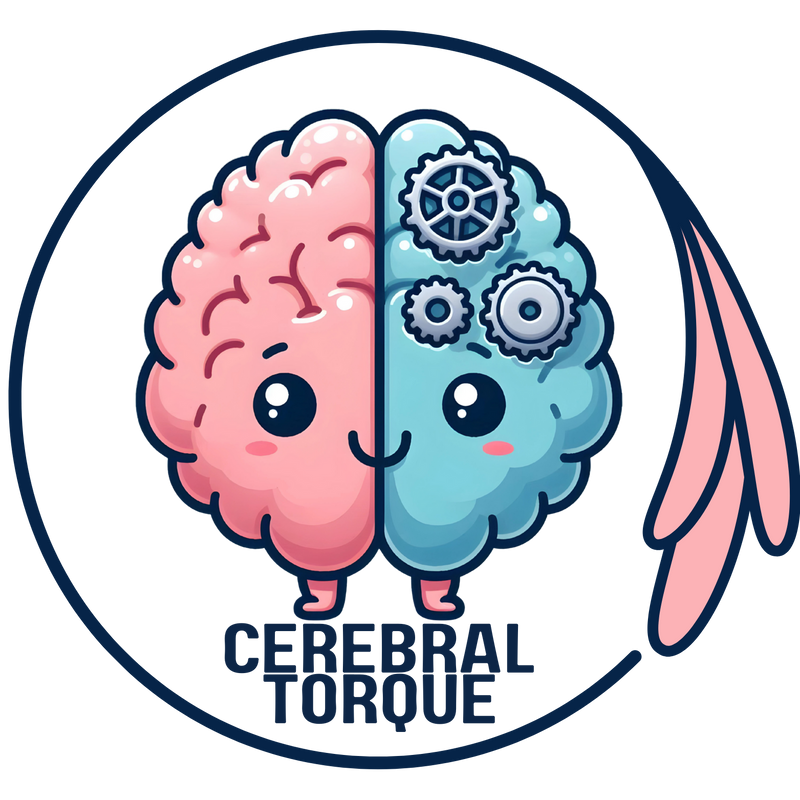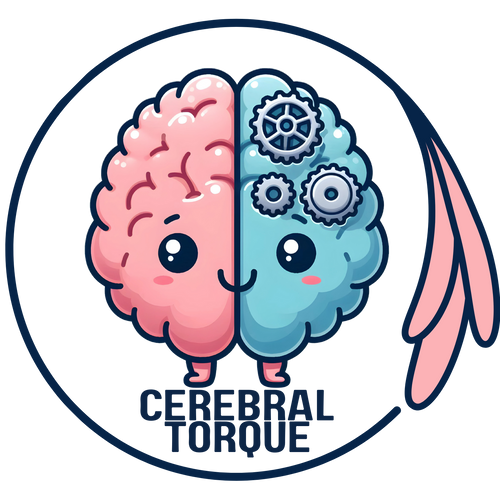Endocannabinoid System Genetics Breakthrough in Medication Overuse Headache
Posted on July 02 2025,
Endocannabinoid System Genetics Breakthrough in Medication Overuse/Adaptation Headache
Study Overview
Researchers have made a discovery about the genetics behind medication overuse/adaptation headache (MOH/MAH). Their study, published in the journal Cephalalgia, found specific DNA changes in patients who develop this complex neurobiological condition where the brain adapts to frequent medication exposure.
MOH/MAH is a neurobiological condition where the brain becomes sensitized to both pain and the absence of medication. It develops in people with underlying headache disorders when frequent use of acute medications paradoxically leads to increased headache frequency. This isn't about "taking too much" - it's a complex adaptation that occurs in vulnerable brains. Learn more about MOH/MAH
Understanding the Neurobiological Process
MOH/MAH doesn't develop in everyone - it requires a "vulnerable brain." This also means that it only occurs in someone with an underlying primary headache disorder like migraine or tension-type headache. The brain's pain processing systems in these individuals are already sensitized, making them susceptible to medication-induced neurobiological changes and adaptation over time.
How the Research Was Done
The researchers took blood samples from all participants and examined the activity of genes related to the body's natural pain-relief system (called the endocannabinoid system). They also measured protein levels and looked at how these genetic changes connected to depression, anxiety, and emotional processing difficulties.
What Researchers Found
The Main Discovery
Patients with medication overuse/adaptation headache have a specific genetic signature - their FAAH gene is much less active, but their FAAH protein levels are much higher. This suggests their bodies are fighting a losing battle to maintain natural pain relief.
Understanding FAAH
FAAH (fatty acid amide hydrolase) is an enzyme that breaks down your body's natural "cannabis-like" chemicals that help control pain. Think of it like this: your body makes its own natural pain relievers, and FAAH is what destroys them when you don't need them anymore.
What This Pattern Means
The researchers believe this creates a harmful cycle. High FAAH protein levels break down too much of the body's natural pain relievers. The body tries to compensate by reducing FAAH gene activity, but it's not enough. This leaves patients with less natural pain protection, making them more vulnerable to chronic headaches.
The Vicious Cycle
Step 1: High FAAH protein destroys natural pain relievers
Step 2: Body reduces FAAH gene activity to try to preserve pain relievers
Step 3: Despite the body's efforts, natural pain relief is still inadequate
Result: Increased vulnerability to chronic headaches and dependence on medications
Understanding the Genetic Results
Here's what the researchers found when they compared the genetic activity of different groups of people.
| What Was Measured | Healthy People | Episodic Migraine | MOH/MAH Patients | Significance |
|---|---|---|---|---|
| FAAH Gene Activity | 0.0004 (normal) Baseline level | 0.0008 (elevated) Higher than healthy people | 0.0002 (suppressed) Much lower than episodic migraine | Highly significant |
| FAAH Protein Levels | 0.90 pg/μg (normal) Baseline level | 0.92 pg/μg (similar) About the same as healthy people | 2.95 pg/μg (elevated) 3 times higher than others | Statistically significant |
| Other Pain System Genes |
No meaningful differences found
|
Not significant | ||
Connections to Mood and Mental Health
One of the most striking findings was how these genetic changes connected to mental health symptoms. Patients with lower FAAH gene activity had more problems with depression, anxiety, and difficulty processing emotions.
The Mood-Genetics Connection
What the Numbers Show
Depression: Lower FAAH gene activity strongly linked to higher depression scores
Anxiety: Same pattern seen with anxiety symptoms
Emotional Processing: Patients had more difficulty identifying and describing their emotions (called alexithymia)
Migraine Disability: Lower gene activity correlated with more severe headache-related disability
Why This Matters
These connections suggest that the same genetic changes causing medication overuse/adaptation headaches may also contribute to the mood problems that many chronic headache patients experience. It's not just that chronic pain causes depression - there may be shared biological mechanisms.
Understanding Alexithymia
Alexithymia is the difficulty in identifying and describing emotions. Many chronic pain patients struggle with this, and now we have a potential biological explanation.
The research found that multiple genes in the pain system were connected to alexithymia scores, suggesting that when your body's natural pain relief system isn't working well, it may also affect emotional processing.
Breaking the Stigma
This research provides biological evidence that the mood problems experienced by chronic headache patients aren't "all in their head" or a sign of weakness. There are real, measurable genetic and biological differences that help explain why some patients struggle with both pain and emotional symptoms. Understanding MOH/MAH as a neurobiological adaptation helps reduce stigma and emphasizes that recovery requires time for these brain adaptations to reverse.
What This Means for Patients
A Potential Blood Test
The specificity of these genetic changes in MOH/MAH patients suggests that a simple blood test could potentially:
Future Diagnostic Applications
- Early Detection: Identify patients at risk for developing medication overuse patterns before it happens
- Confirm Diagnosis: Help doctors distinguish MOH/MAH from other types of chronic headaches
- Treatment Monitoring: Track whether treatments are working by watching genetic changes over time
- Personalized Medicine: Guide doctors in choosing the best treatments for each individual patient
Hope for Better Treatment
Understanding the genetic basis of MOH/MAH opens new avenues for treatment. Instead of just telling patients to stop taking their pain medications (which often doesn't work), doctors might eventually be able to:
Potential Treatment Approaches
Target the Root Cause: Develop medications that address the FAAH imbalance directly
Predict Treatment Response: Use genetic information to choose treatments more likely to work for each patient
Address Multiple Symptoms: Treat both the headaches and mood symptoms with approaches that target shared biological pathways
Validation for Patients
This research provides scientific validation for what many patients already know - that medication overuse/adaptation headache is a real medical condition with biological causes. As noted in my comprehensive MOH/MAH guide, this is a neurobiological adaptation rather than a personal failing. There are measurable genetic differences that make some people more vulnerable to this condition.
The Road to New Treatments
Current Limitations
This is still early research with a relatively small number of participants (45 total). While the findings are promising, they need to be confirmed in larger studies before they can change how doctors diagnose and treat patients.
Cannabis-Based Medicine Research
This research also supports growing interest in cannabis-based treatments for migraine. Also, since FAAH breaks down the body's natural cannabis-like chemicals, medications that block FAAH might help restore the natural balance. For more on this topic, see my comprehensive guide to cannabinoids and migraine.
"This research represents a major step forward in understanding the neurobiological basis of medication overuse/adaptation headache. For the first time, we have genetic biomarkers that could guide both diagnosis and treatment decisions, reinforcing that MOH/MAH is a neurobiological adaptation rather than a personal failing." - Cerebral Torque
Source
- Romozzi, M., Scipioni, L., Di Tella, S., Silveri, M.C., Cupini, L.M., Vollono, C., Maccarrone, M., & Calabresi, P. (2025). Genetic characterization of the endocannabinoid system and psychiatric features in patients with migraine and medication overuse headache. Cephalalgia, 45(7), 1-11. Read the full study
Wed, Dec 17, 25
Migraine Management During Pregnancy, Breastfeeding, and Pregnancy Planning
This guide provides comprehensive, evidence-based recommendations for migraine management throughout the reproductive journey.
Read MoreMon, Nov 17, 25
Migraine Research - During the week of my absence.
Migraine Research - During the week of my absence. The Association Between Insomnia and Migraine Disability and Quality of Life This study examined how insomnia severity relates to migraine disability...
Read MoreSat, Nov 01, 25
Anti-CGRP Monoclonal Antibody Migraine Treatment: Super-Responders and Absolute Responders and When to Expect Results
Anti-CGRP monoclonal antibodies achieved 70% super-response and 23% complete migraine freedom in a one-year study. Most dramatic improvements occurred after 6 months of treatment. For patients with chronic or high-frequency...
Read More


